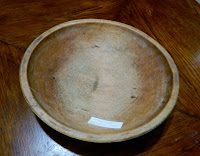 |
| Image by Greg Waskovich from Pixabay |
Summer and porches really do go together. While my personal experience with “real” rustic porches includes homey things like muddy boots, fishing tackle, milk buckets and other odds and ends of rural life, there is a long tradition of a wide, shaded porch being an extension of the living room, complete with a porch swing, bench or rocking chairs. It’s long been the perfect place for colorful hanging plants as well as wreaths and bouquets of flowers in tin pails or mason jars.
We had a wide, wrap-around porch when I was a kid. It was covered but not screened. The house was a late nineteenth century farmhouse on an uneven lot and the porch was only a foot or so above the ground on one end, rising to about four feet off the ground around the other side of the house, where the land dropped away. This was a trap, as small children liked to ride their tricycles from one end to the other and could potentially go off the high end.
Don’t ask me how I know this.
 |
| July door wreath |
Your rustic front porch, however, is clutter-free, level and inviting on a warm summer day. How to make it more so?
Begin with seating, and the iconic rocking chair. While cradles with rockers and rocking horses have been around since ancient times, the rocking chair was invented in the early 1700’s in America. Visiting Europeans thought we were a little strange, in fact, with our ubiquitous rocking chairs. At first they were used in gardens and on porches, but eventually made their way indoors. President John F. Kennedy had them placed in every room of the White House to ease his bad back. They are very therapeutic, as well as indispensable for rocking babies to sleep.
 |
| Image by designerlisahenry from Pixabay |
Cushions can be added to your porch rocker for more comfort, although here in the humid Pacific Northwest we bring them in at night, or launder frequently, to prevent mildew.
Add a rug, if your porch is big enough, and an end table or coffee table (a large wooden wire spool works for this) and you have a casual addition to your living space. Candles, lanterns or small, twinkly strands of lights let you stay out listening to the frogs and crickets…or coyotes, depending on your location.
In the south folks would be sipping sweet tea but add the beverage of your choice and enjoy those crickets.
Margaret
















